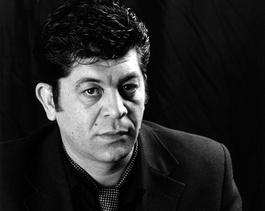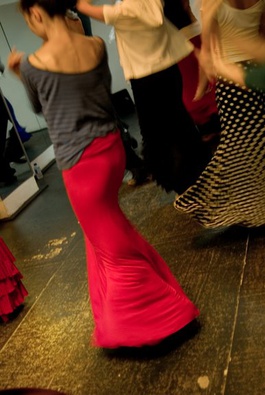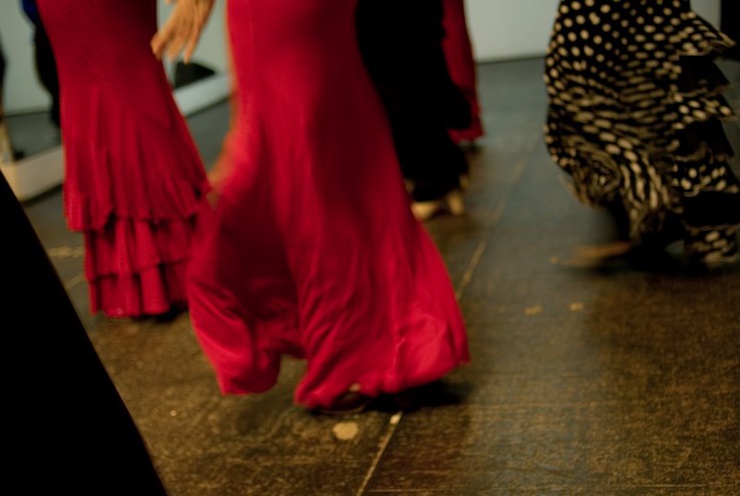
Tomás de Perrate: 'I don’t know a single gypsy family that feels discriminated against in Andalucia'
Published on
Translation by:
 Kate Stansfield
Kate Stansfield
The 43-year-old started singing in 1999, after ten years as a hairdresser. Inspired by America's Tom Waits, he says that Balkan gypsy music does not belong to the flamenco family
Tomás de Perrate likes to say that people are ‘thirsty for flamenco’. He was born and still lives in Utrera, which along with Lebrija and Jerez, is one of the three corners of the famous flamenco triangle composed of the city of Seville. He warns that without the international market, the blooming generation of contemporary flamenco would not find a big enough market in Spain. ‘Not long ago, I went to Paris to sing. Instead of booking into a hotel, I stayed with the head of the flamenco association in France. I was thrilled to see how huge the association was and how well up on flamenco its members were.’
Lucky breaks
 His father el Perrate de Utrera was a renowned singer in the fifties and sixties, 'but I did not start out on the same path. It was my older brother who dedicated himself to flamenco music.’ Sadly, the eldest son died in a car accident. ‘What I liked was the drums and the electric guitar,’ explains the Andalucian gypsy. He started to edge closer to flamenco by listening to pop records by Spanish musician Kiko Veneno and flamenco band Pata Negra. On Perrate’s first album Perraterías (2006), the drums and harmonica can be heard behind a very pure flamenco vocal. He follows the career of Granada-born singer Enrique Morente, the pioneer of mixing hard rock with flamenco. ‘Even if sometimes he’s mucked about a lot and even spoiled what I played,’ he says, ever respectful of those launching themselves into the abyss of innovation.
His father el Perrate de Utrera was a renowned singer in the fifties and sixties, 'but I did not start out on the same path. It was my older brother who dedicated himself to flamenco music.’ Sadly, the eldest son died in a car accident. ‘What I liked was the drums and the electric guitar,’ explains the Andalucian gypsy. He started to edge closer to flamenco by listening to pop records by Spanish musician Kiko Veneno and flamenco band Pata Negra. On Perrate’s first album Perraterías (2006), the drums and harmonica can be heard behind a very pure flamenco vocal. He follows the career of Granada-born singer Enrique Morente, the pioneer of mixing hard rock with flamenco. ‘Even if sometimes he’s mucked about a lot and even spoiled what I played,’ he says, ever respectful of those launching themselves into the abyss of innovation.
 ‘I have been a women's hairdresser for twenty years. Once, when I improvised a flamenco song at a wedding, I looked up to see everyone crying with surprise and emotion.’ That was when his brother, who was recording a flamenco album for Christmas, set up a little trap for him. ‘He told me he needed a guitarist to accompany other well-known singers. When I arrived at the studio, nobody turned up and he told me we had to record the album straight away, and I should get singing.’ Some days later, they called him in to listen to the result and give his opinion. ‘I was so stunned that there was nobody but me. I thought it was a studio trick, so I went to a colleague's house, told him to record it with the ‘Penco’ computer he had so that I could listen to it without any arrangement in the way. That was when I became convinced I was good at this. I didn’t leave hairdressing because my wife helps me out,’ says the singer, who believes that his launch into flamenco has even revitalised his marriage. ‘Flamenco keeps me busy at weekends, too. From Mondays to Thursdays, I don’t have anything to do, not even take my little girl to school.’
‘I have been a women's hairdresser for twenty years. Once, when I improvised a flamenco song at a wedding, I looked up to see everyone crying with surprise and emotion.’ That was when his brother, who was recording a flamenco album for Christmas, set up a little trap for him. ‘He told me he needed a guitarist to accompany other well-known singers. When I arrived at the studio, nobody turned up and he told me we had to record the album straight away, and I should get singing.’ Some days later, they called him in to listen to the result and give his opinion. ‘I was so stunned that there was nobody but me. I thought it was a studio trick, so I went to a colleague's house, told him to record it with the ‘Penco’ computer he had so that I could listen to it without any arrangement in the way. That was when I became convinced I was good at this. I didn’t leave hairdressing because my wife helps me out,’ says the singer, who believes that his launch into flamenco has even revitalised his marriage. ‘Flamenco keeps me busy at weekends, too. From Mondays to Thursdays, I don’t have anything to do, not even take my little girl to school.’

From Utrera to Europe
However, his new life as a singer has uprooted him from Utrera and taken him across Europe. ‘Once I went to sing in Utrecht,’ he says, of the flamenco biennale organised each year with three stages, displays, lectures, and so on. Flamenco is not just music - it is painting, sculpture and literature too. ‘I discovered the same in Berlin. I thought flamenco would be a rare thing and it turns out to be extremely popular: there are festivals and even courses with German teachers teaching Spanish students.’ But what most fills him with pride is the respect with which Japanese people have adopted flamenco. ‘Maybe in Andalucia where flamenco is so a part of the culture, the public is more loyal. Abroad, this is really a cult art form,’ he concludes.
‘Copying is the best way to learn,’ Perrate suddenly announces. ‘If you immerse yourself in classical philosophy you will not be able to adapt to the contemporary,’ he says, explaining his desire to imitate the mythical Fernanda and Bernarda de Utrera. ‘I really like the ‘hot’ music of the moment from Cuba or Brazil: Cateano Veloso, Silvio Rodríguez, and so on. I don't really like plain old pop anymore, it is too Anglo-Saxon, too cold,’ he says to define his influences, only to later announce that, as paradoxical as it seems, he is hooked on the music of American artist Tom Waits. ‘Especially his music for the Jim Jarmusch’s films,’ he says, referring to Down By Law ( 1986) and Night on Earth (1991).
Gyspy music from the Balkans moves Perrate too, but it isn't flamenco, he says. ‘It doesn’t belong to the same family, even though it comes from the same womb. We gypsies have brought our rhythms from the east, but Andalucia is the backdrop against which flamenco has developed, thanks to the last two hundred and fifty years of healthy coexistence and integration with the rest of the population.’ It’s a surprising comment at a time when gypsies in Italy are stigmatised, and not all those in Spain feel accepted. ‘I don’t know a single gypsy family that feels discriminated against in Andalucia. What is more, I believe that being a gypsy has been an advantage for me,’ he finishes with composure.
Translated from Tomás de Perrate: "Ser gitano ha sido una ventaja para mí"


